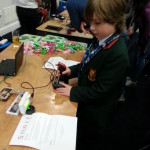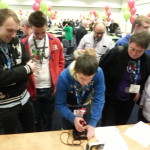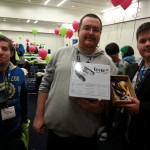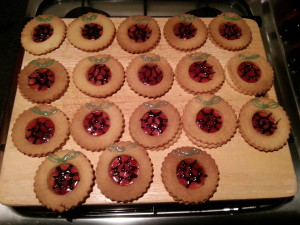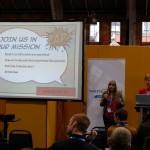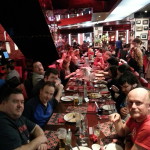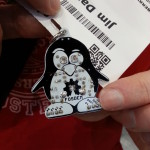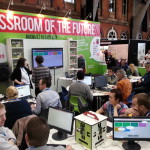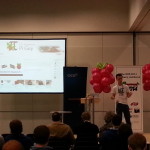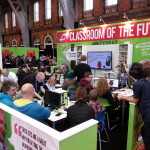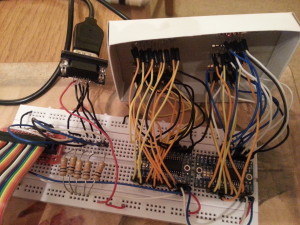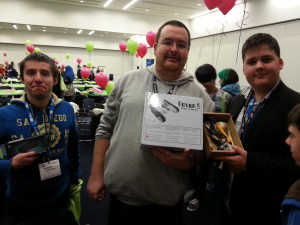After the (semi) serious business of workshops, talks and panel sessions was over and the various exhibitors started had started breaking down their stands it was party time! The Jamboree coincided with the Raspberry Pi’s 2nd birthday. OK, technically that’s on the 29th Feb but why let that ruin a good excuse for a party?!
In the run up to the Jam Lisa “@elsie_m_” Mather had offered to help organise some of the after show party. In true Alan “@teknoteacher” O’Donohoe style, this ended up being Lisa organising the whole shabang…. and an wonderful job she did too!
#Achievementunlocked Swagmobile is full to bursting! #rjamboree party o/ pic.twitter.com/21KhppdAiM
— Lisa Mather (@elsie_m_) February 28, 2014
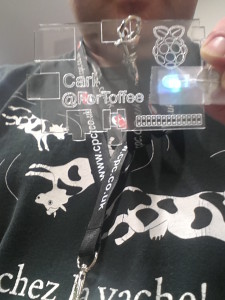
Pre Party Party
Well, less of a “party” more of a “working party” was formed from those willing, and those walking past, to get the room sorted in the hour we had between talks and the party start time. With frenetic pace name badges were constructed, tables laid, swag bags filled, freebie Rubiks cubes distributed and Pi themed side shows were put together.
Awards, Cakes and Games
At 5pm the unwashed masses were let into the room with Alan O’D compering like we were a Yr 7 & 8 assembly and Lisa hooning round the place like her life depended on it.
There were games
Currently I hold the top score of 75 on #raspberryripple at the #rjamboree pic.twitter.com/lYY3BIAXV8
— Martin O'Hanlon (@martinohanlon) February 28, 2014
Waiting to have a go at @boeeerb's Tin can alley Pi game #rjamboree pic.twitter.com/YPi05GJxzg
— Christine Harvey (@TeachesCompSci) February 28, 2014
I'm at the #rjamboree with @oliverquinlan @misskingsley85 and @sezzyann72 VERY cool matrix photo pic.twitter.com/OOUIkIeO00
— DeputyMitchell (@DeputyMitchell) February 28, 2014
…and Snake
- Dan taking the first go at Snake
- Snake becomes a spectator sport
- Chris (3rd – 21) Michael & Oliver (1st – 22)
There were awards (huge round of applause for Amy)
Congrats to @minigirlgeek on her IET award at #RJamboree http://t.co/Te3aLBcXJo
— Clare Macrae (@ClareMacraeUK) February 28, 2014
and there was prize winning cake!
@pimoroni The Pibow – a colourful, edible and fun cake for the Raspberry Pi!
Made by yours truely, adapted from http://www.bbcgoodfood.com/recipes/3467/red-nose-day-raspberry-cookies
and the swag bags even came with wearable electronics to sew on (this was done post Jam I might add)
@elsie_m_ @charwarz that better? pic.twitter.com/UDZrrjH1TE
— Carl Monk (@ForToffee) March 5, 2014
So Long And Thanks For All The Pis!
The party was two hours, when it needed to be at least twice that long! As soon as it had started it felt like it was time to pack up and ship out before security sent in the heavies. So with a swift round of farewells to new found friends it was time to go home. A huge well done to Lisa for staging such a brilliant party.
To finish I’ll leave you with the tweet I sent as I sat on the train pulling out of Manchester.
#RJamboree over. @teknoteacher Alan bought us together but this Alan started it, be rude not to say hi to him pic.twitter.com/kVipYOSt0I
— Carl Monk (@ForToffee) February 28, 2014
